Aquatic Exotic Pet Behavior – Finally Decoding the Mystery
Aquatic exotic pets bring a unique charm to our homes with their captivating behaviors and adaptations to life in water.
From vibrant tropical fish to graceful turtles and fascinating amphibians, these pets exhibit a wide range of behaviors that reflect their natural instincts and habitats.
By decoding their behaviors, we can gain a deeper understanding of their needs and provide them with the best possible care.
In this article, we will explore the fascinating world of aquatic exotic pet behavior, from their unique characteristics to factors influencing their behavior and tips for fostering a strong bond.
Key Takeaways:
- Aquatic exotic pets exhibit a wide range of behaviors, including basking, swimming, hunting, and territorial displays.
- Understanding their natural behaviors and providing suitable environments, such as proper tank size, water quality, and hiding spots, is crucial for their well-being.
- A balanced and species-appropriate diet, regular veterinary care, and social interactions contribute to the overall health and happiness of aquatic exotic pets.
- Observing visual cues and behavioral signals can help interpret their needs and emotions, while positive reinforcement and quality time facilitate bonding with these pets.
- Each species has unique behaviors, such as bettas’ aggression, red-eared sliders’ basking, and axolotls’ regeneration abilities.
- Introduction
Aquatic exotic pets encompass a diverse range of species, each with its own behaviors and requirements.
Observing and understanding their behaviors not only allows us to appreciate their natural instincts but also helps us provide the necessary care and create a suitable environment for their well-being.
By delving into the intricacies of aquatic exotic pet behavior, we can enhance our interactions with these remarkable creatures.
Aquatic Exotic Pet Species
Aquatic exotic pets can be found in various groups, including tropical fish, aquatic turtles, and aquatic reptiles.
Let’s explore each of these groups and some popular species within them:
1. Tropical Fish
Tropical fish are known for their vibrant colors, unique patterns, and diverse behaviors.
They thrive in aquariums and require specific water conditions to ensure their health and well-being.
Here are a few examples of popular tropical fish species:
- Guppies: Guppies are small, colorful fish known for their playful and active behavior. They exhibit schooling behavior and can coexist peacefully with other non-aggressive species.
- Angelfish: Angelfish are known for their elegant appearance and graceful swimming. They display social behaviors and may form pair bonds.
- Neon Tetras: Neon Tetras are small, schooling fish with vibrant neon blue and red colors. They exhibit shoaling behavior and feel more secure when kept in groups.
2. Aquatic Turtles
Aquatic turtles are fascinating creatures that require both aquatic and terrestrial environments.
They exhibit a range of behaviors associated with swimming, basking, and feeding.
Some popular aquatic turtle species include:
- Red-Eared Slider: Red-Eared Sliders are commonly kept as pets and are known for their distinctive red patch behind the eye. They display basking behavior and enjoy spending time both in the water and on land.
- Painted Turtle: Painted Turtles are native to North America and are recognized by their colorful patterns on their shells. They exhibit basking behavior and are skilled swimmers.
- Map Turtles: Map Turtles are named for the intricate patterns on their shells, which resemble contour lines on a map. They exhibit both basking and diving behaviors.
3. Aquatic Reptiles
Aquatic reptiles, such as water dragons and caimans, are fascinating and unique pets.
While they require specialized care, understanding their behaviors is essential for providing a suitable environment.
Here are a couple of examples:
- Chinese Water Dragon: Chinese Water Dragons are semi-aquatic reptiles known for their striking appearance and arboreal behavior. They require both water and land areas in their enclosure and exhibit territorial behaviors.
- Caiman: Caimans are small to medium-sized crocodilians that inhabit freshwater environments. They exhibit various behaviors associated with feeding, basking, and territoriality.
Factors Influencing Aquatic Exotic Pet Behavior
Several factors can influence the behavior of aquatic exotic pets.
By considering these factors, we can create an environment that supports their natural behaviors and promotes their well-being.
1. Environment
The aquatic environment plays a crucial role in shaping the behavior of these pets.
Factors such as water temperature, pH level, filtration, and the presence of hiding spots and decorations are essential for their overall comfort and stimulation.
- Water Temperature: Different species have specific temperature requirements. It’s important to maintain the water temperature within the suitable range for your pet species.
- Water Quality: Proper filtration and regular water testing are vital to maintain optimal water quality. Poor water quality can lead to stress, illness, and abnormal behavior.
- Aquarium Size: Providing an adequately sized aquarium is crucial for aquatic pets. It allows for proper swimming space, reduces stress, and prevents aggressive behaviors due to overcrowding.
- Aquarium Décor: Adding suitable plants, rocks, and driftwood can create a naturalistic environment and offer hiding spots for your pets. This helps reduce stress and encourages natural behaviors.
2. Diet and Nutrition
A well-balanced and species-appropriate diet is essential for the health and behavior of aquatic exotic pets.
Consider the following factors when planning their diet:
- Species-Specific Requirements: Different species have varying dietary needs. Research and provide a diet that meets the specific nutritional requirements of your pet.
- Feeding Frequency: Establish a regular feeding schedule that aligns with the natural feeding patterns of your pet species. Some species may require multiple small meals throughout the day, while others may feed less frequently.
- Variety and Nutritional Balance: Offer a diverse range of food items, including pellets, flakes, live or frozen prey, and fresh vegetables, to ensure a balanced diet. This provides mental stimulation and mimics their natural feeding behaviors.
3. Social Interactions
Social interactions, both with conspecifics (members of the same species) and other pets or humans, can significantly impact the behavior of aquatic exotic pets.
Consider the social needs of your pet species:
- Social Species: Some species thrive in social environments and require the presence of conspecifics to exhibit natural behaviors. Research whether your pet species should be kept alone or in groups.
- Compatibility: When housing multiple aquatic pets together, ensure they are compatible in terms of size, behavior, and habitat requirements. Incompatible tank mates can lead to stress, aggression, or even predation.
- Human Interaction: Regular positive interactions with humans can help socialize your pets and foster a bond. Gradually acclimate them to human presence, handling, and feeding to build trust and minimize stress.
4. Health and Well-being
The health and well-being of aquatic exotic pets greatly influence their behavior.
Maintaining good health requires attention to the following aspects:
- Regular Veterinary Care: Schedule routine check-ups with a veterinarian experienced in exotic pet care. Regular examinations help detect and address potential health issues.
- Cleanliness and Hygiene: Maintain a clean and hygienic tank environment by performing regular water changes, cleaning filtration systems, and monitoring water quality parameters.
- Environmental Enrichment: Provide environmental enrichment through the addition of toys, puzzles, and interactive feeding devices. This stimulates their natural behaviors and prevents boredom.
Communication and Body Language
Aquatic exotic pets communicate through various visual cues and behavioral signals.
Understanding their communication methods can help us interpret their needs and emotions.
Pay attention to the following aspects:
1. Visual Cues
Visual cues can provide valuable insights into the behavior and well-being of aquatic exotic pets.
These cues may include changes in coloration, fin posture, and body movements.
Here are a few examples:
- Color Changes: Some species, like chameleons and certain fish, can change color to communicate their mood, aggression, or readiness to breed.
- Fin Posture: Raised, erect fins may indicate aggression or territorial behavior, while relaxed, flowing fins suggest a calm and content state.
- Body Movements: Unusual swimming patterns or erratic movements may signal distress or illness.
2. Behavioral Signals
Behavioral signals are equally important in decoding the messages conveyed by aquatic exotic pets.
Observing their behavior can help us understand their current state and emotional well-being.
Consider the following behavioral signals:
- Aggression: Aggressive displays, such as chasing, fin-nipping, or flaring, indicate territorial disputes or mating behavior.
- Feeding Behavior: Active feeding, excitement during feeding time, or searching for food can indicate a healthy appetite and engagement.
- Hiding or Withdrawal: If your pet spends excessive time hiding or shows a sudden change in behavior by becoming withdrawn, it may indicate stress or illness.
Understanding and interpreting these visual cues and behavioral signals require attentive observation and familiarity with your specific pet species.
Feeding Patterns and Strategies
Feeding behaviors among aquatic exotic pets vary depending on their natural diet and hunting strategies.
Understanding their feeding patterns can help ensure a proper feeding routine and enhance their well-being.
1. Hunting and Foraging
Many aquatic exotic pets exhibit natural hunting and foraging behaviors.
Replicating these behaviors in captivity can provide mental stimulation and fulfill their natural instincts.
Consider the following:
- Live Prey: Some species, like certain fish or aquatic reptiles, prefer live prey. Providing live food items allows them to engage in hunting behaviors and satisfy their predatory instincts.
- Food Dispensing Toys: Food dispensing toys can be used for species that enjoy foraging. These toys release small amounts of food when manipulated, stimulating their problem-solving abilities and mimicking natural foraging behaviors.
2. Feeding Habits
Different species have specific feeding habits and preferences.
Understanding their feeding habits helps provide appropriate nutrition and feeding routines.
Here are a few examples:
- Herbivores: Herbivorous species, such as certain turtles or fish, primarily feed on plant matter. Ensure a diet rich in vegetables, algae, and aquatic plants.
- Carnivores: Carnivorous species, like predatory fish or aquatic reptiles, require a diet high in protein. Offer meaty food items such as insects, worms, or small fish.
- Omnivores: Omnivorous species have a varied diet, consisting of both plant and animal matter. Provide a balanced mix of plant-based and protein-rich foods.
Understanding your pet’s specific dietary requirements and feeding preferences is essential for maintaining their health and promoting natural feeding behaviors.
Reproduction and Mating Rituals
Reproduction and mating rituals are crucial aspects of aquatic exotic pet behavior.
While specific behaviors vary between species, understanding these processes is essential for pet owners considering breeding or observing natural mating behaviors.
1. Courtship Displays
Many aquatic exotic pets engage in elaborate courtship displays to attract mates.
These displays often involve vibrant colors, intricate movements, or vocalizations.
Here are a few examples:
- Fish Spawning Rituals: Some fish species exhibit courtship displays before spawning, involving vibrant color changes, fin displays, and synchronized swimming patterns.
- Turtle Mating Rituals: Aquatic turtles may engage in elaborate courtship displays, such as head bobbing, circling, or nipping behavior, to attract a mate.
2. Nesting and Spawning
Understanding the nesting and spawning behaviors of aquatic pets is crucial for those interested in breeding.
Here are a few key points:
- Egg Laying: Some aquatic species, like turtles or certain fish, lay eggs. They require suitable nesting sites, proper substrate, and specific environmental conditions for successful egg incubation.
- Parental Care: Certain species, such as some cichlid fish or aquatic frogs, exhibit parental care, where one or both parents guard and protect the eggs until they hatch. Understanding the requirements for successful parental care is crucial for breeding success.
Territorial Behavior and Aggression
Territorial behavior and aggression can occur among aquatic exotic pets, especially in confined spaces.
Understanding the dynamics of territoriality and aggression is important for maintaining a peaceful and stress-free environment.
1. Establishing Territories
Many aquatic species have natural territorial tendencies.
Understanding their territorial behavior helps create suitable housing arrangements and prevents conflicts.
Consider the following:
- Providing Adequate Space: Ensure the tank or enclosure size is appropriate for your pet species, allowing individuals to establish territories and minimize aggression due to overcrowding.
- Territory Marking: Some species mark their territories through scent or visual cues. Providing suitable substrates or decorations can offer opportunities for territory marking and help prevent conflicts.
2. Aggression and Conflict Resolution
Occasional aggression or conflicts may arise, even among otherwise peaceful aquatic pets.
Managing aggression and resolving conflicts is crucial for maintaining a harmonious environment.
Consider the following:
- Separating Aggressive Individuals: If aggression persists and poses a threat to the well-being of other tank mates, consider separating the aggressive individual into a separate tank or enclosure.
- Providing Hiding Spots: Offering hiding spots and creating visual barriers can help reduce aggression by providing individuals with places to retreat and establish personal space.
- Balancing Tank Mates: When introducing new individuals, research compatibility and consider the size, behavior, and specific requirements of each species to minimize potential conflicts.
Unique Behaviors of Different Species
Each aquatic exotic pet species possesses unique behaviors that make them fascinating and captivating.
Let’s explore a few examples:
1. Betta Fish: The Siamese Fighting Fish
Betta fish, also known as Siamese fighting fish, exhibit distinctive behaviors:
- Aggression: Male bettas are known for their territorial and aggressive nature, especially towards other males. They may display elaborate fin displays and flaring behavior when defending their territory.
- Bubble Nest Building: Male bettas construct bubble nests at the water’s surface to attract females for breeding. These nests are created by blowing bubbles and incorporating plant matter or other floating objects.
2. Red-Eared Slider Turtles: Basking and Sunning
Red-Eared Slider turtles display unique behaviors related to basking and sunning:
- Basking: Red-Eared Sliders are known for their basking behavior, where they climb out of the water and rest on a platform or rock to absorb heat from a heat lamp or natural sunlight.
- Sunning: These turtles also engage in sunning behavior, often seen floating on the water’s surface with their limbs extended, maximizing their exposure to sunlight.
3. Axolotls: Regeneration Abilities
Axolotls are fascinating amphibians known for their regenerative abilities:
- Regeneration: Axolotls have the remarkable ability to regenerate lost limbs, spinal cord tissue, and even parts of their heart and brain. They can regrow these body parts throughout their lives, making them unique among vertebrates.
Bonding with Your Aquatic Exotic Pet
Building a strong bond with your aquatic exotic pet is essential for their well-being and your enjoyment.
Consider the following tips for fostering a strong connection:
1. Creating an Enriched Environment
Provide a stimulating environment that mimics their natural habitat.
This includes suitable tank decorations, hiding spots, and opportunities for exploration and play.
2. Positive Reinforcement
Use positive reinforcement techniques, such as rewards and treats, to encourage desirable behaviors and create a positive association with interaction and training.
3. Spending Quality Time
Allocate regular time for interaction and observation.
This allows you to bond with your pet, observe their behaviors, and respond to their needs promptly.
Conclusion
Understanding the behavior of aquatic exotic pets enhances our ability to provide optimal care and create a fulfilling environment.
By considering factors like the environment, diet, social interactions, and health, we can support their natural behaviors and build a strong bond with these captivating creatures.
Remember to research and educate yourself about the specific behaviors and requirements of your pet species to ensure their well-being and happiness.
FAQs
Can I keep different species of aquatic exotic pets together in the same tank?
It depends on the species and their compatibility.
Research the specific requirements and behaviors of each species to determine if they can coexist peacefully.
How can I prevent aggression among my aquatic pets?
Providing adequate space, suitable hiding spots, and balancing tank mates based on size and behavior can help prevent aggression.
Separating aggressive individuals may be necessary in some cases.
How can I tell if my aquatic pet is stressed or unwell?
Signs of stress or illness in aquatic pets may include unusual swimming patterns, changes in appetite, hiding or withdrawal, and physical abnormalities.
Consult a veterinarian experienced in exotic pet care if you suspect any health issues.
Do aquatic exotic pets require social interaction?
Some species thrive in social environments and require the presence of conspecifics, while others are solitary.
Research the social needs of your specific pet species to provide appropriate social interactions.
Can I train my aquatic exotic pet?
While not all aquatic exotic pets can be trained like dogs, some species can learn simple behaviors through positive reinforcement training.
Consult reliable sources or seek guidance from experienced trainers for species-specific training techniques.
Peter Stones is the founder of Exotic Pets Place, the leading online resource for exotic pet care information.
With over 10 years of hands-on exotic pet ownership experience, he is deeply passionate about sharing his expertise to help others properly care for their unusual pets.
When he's not writing extensively researched articles or connecting with fellow exotic pet enthusiasts worldwide, you can find Peter at home tending to his own beloved menagerie of exotic animals.

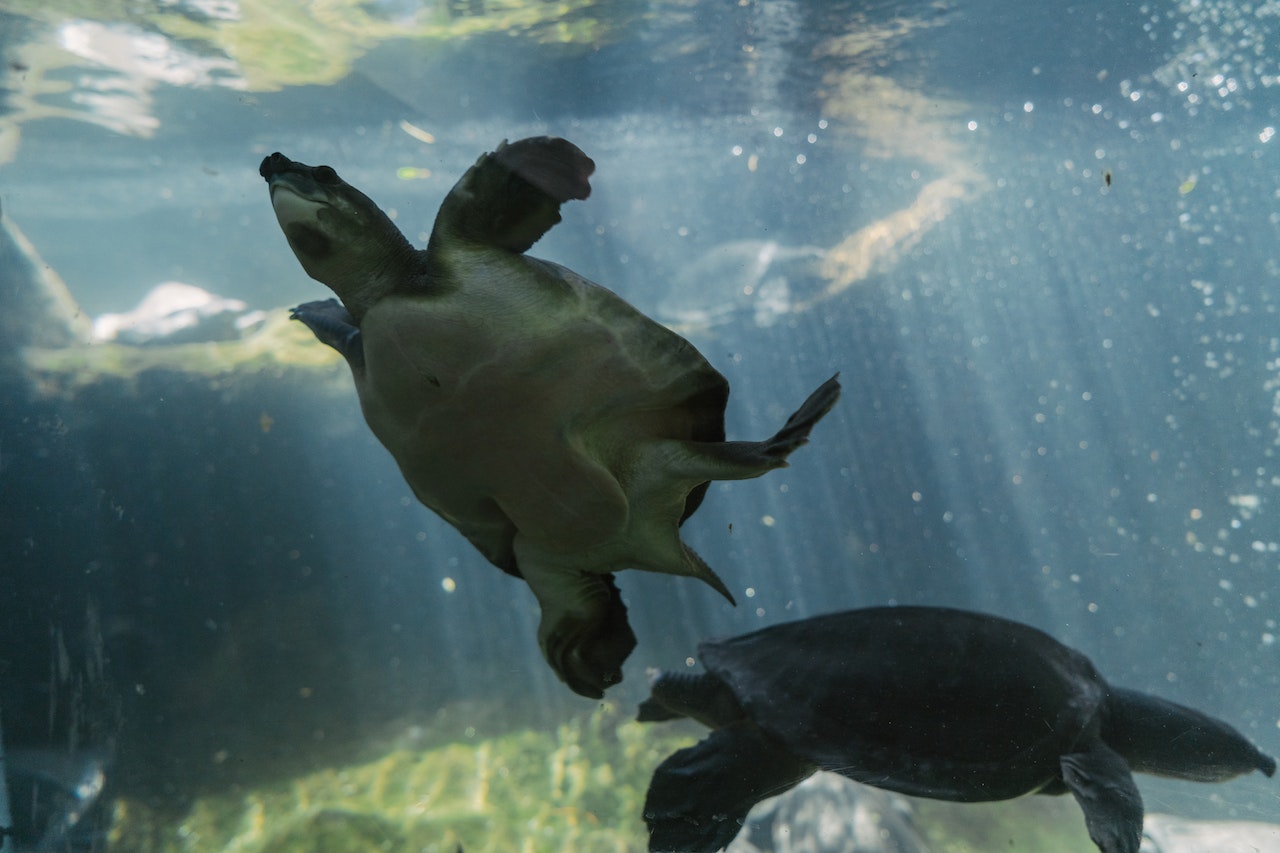
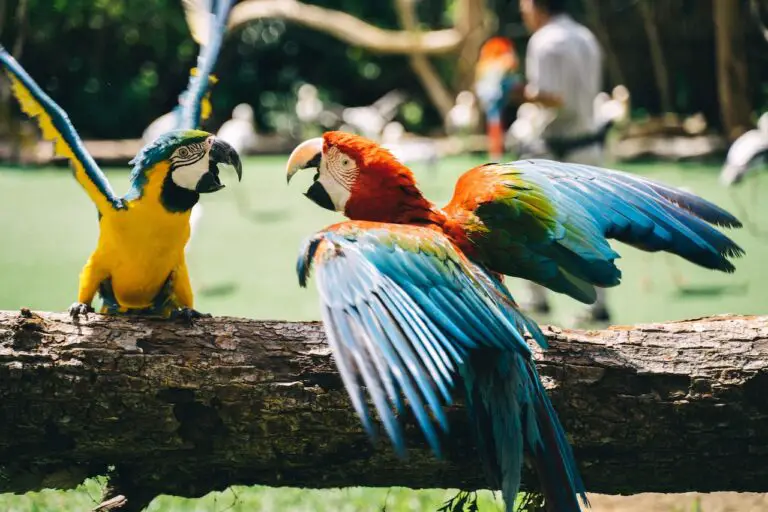
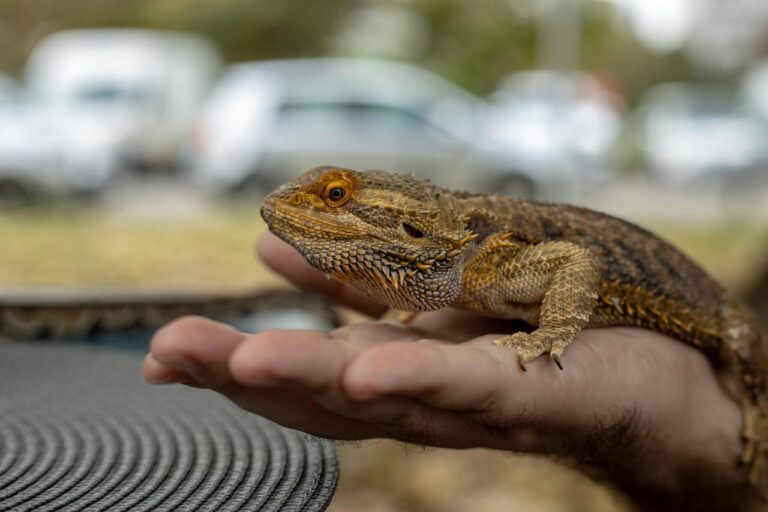

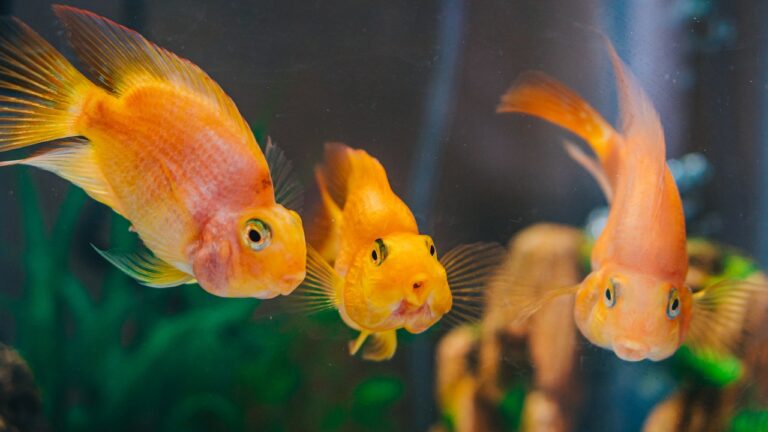
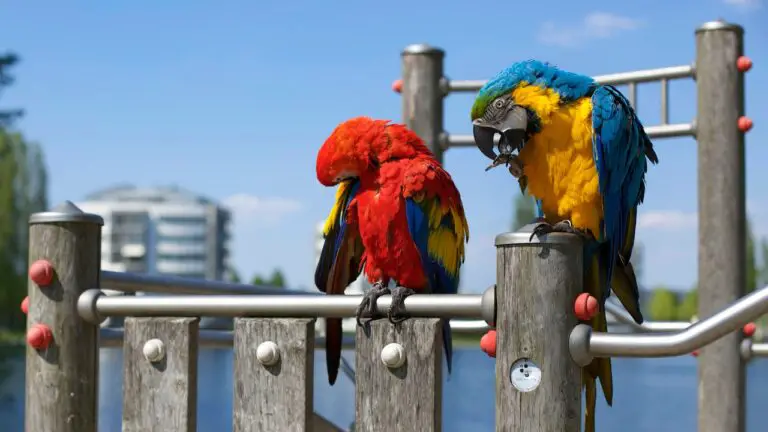
![Exotic Small Mammals Nutritional Guide [Your Ultimate Resource], two guinea pigs eating veggies](https://exoticpetsplace.com/wp-content/uploads/2023/06/Exotic-Small-Mammals-Nutritional-Guide-Your-Ultimate-Resource-two-guinea-pigs-eating-veggies-768x529.jpg)